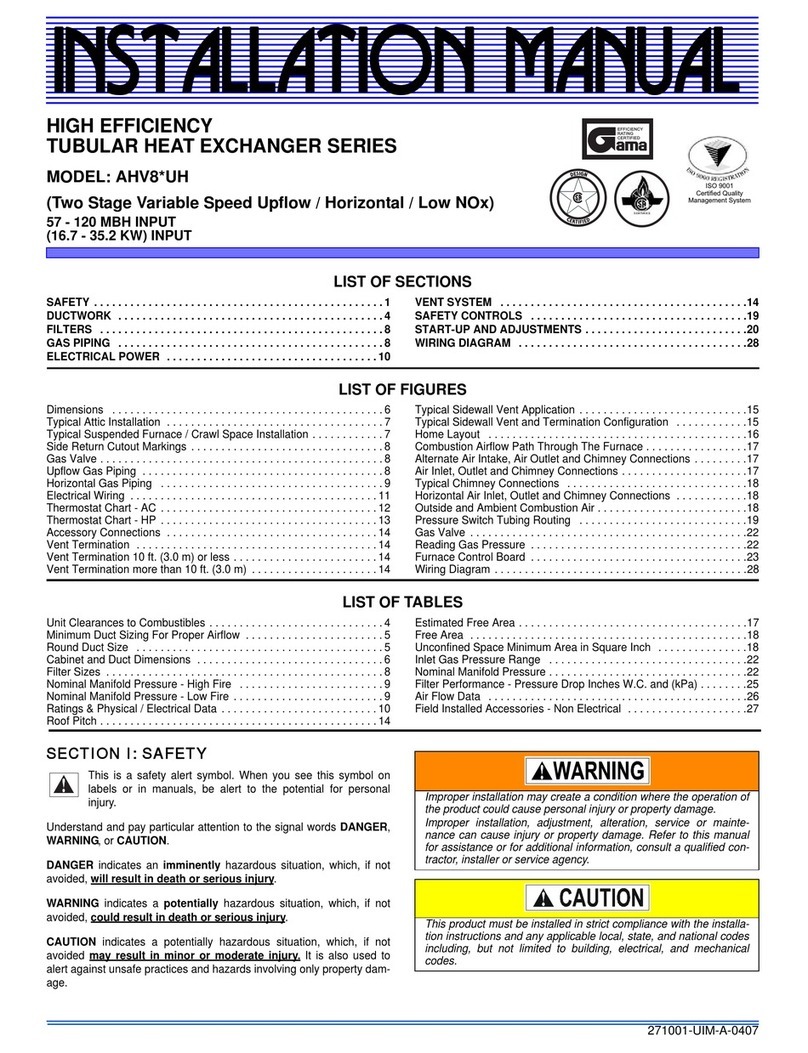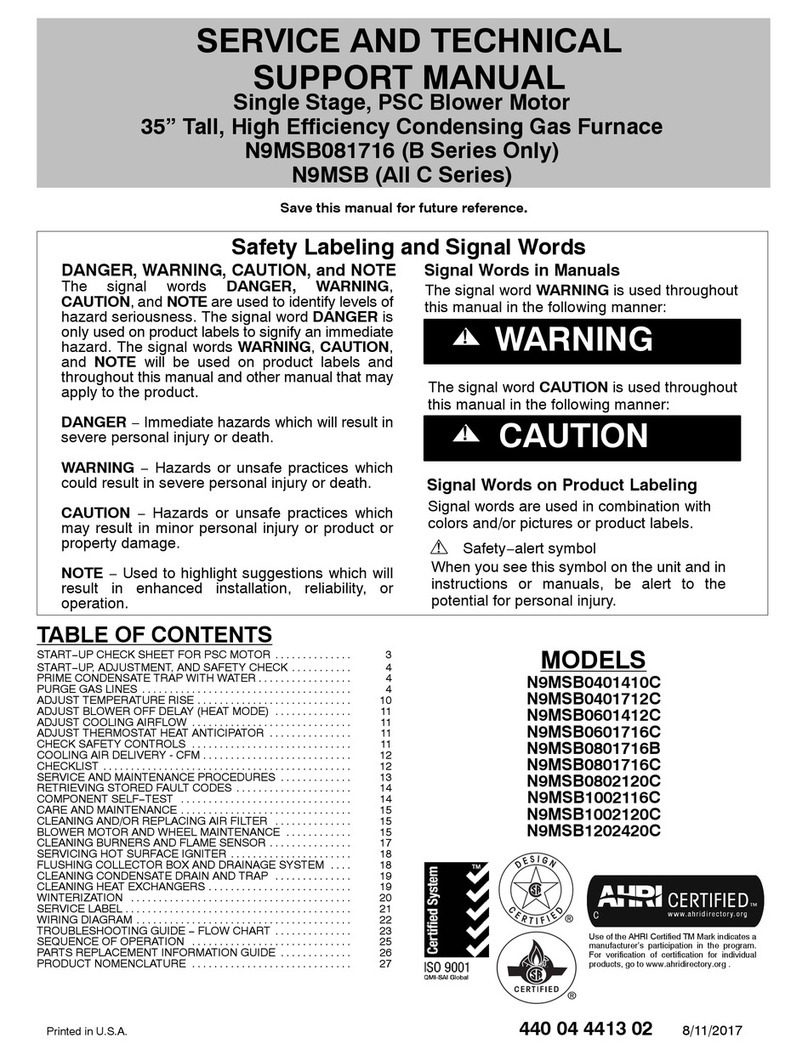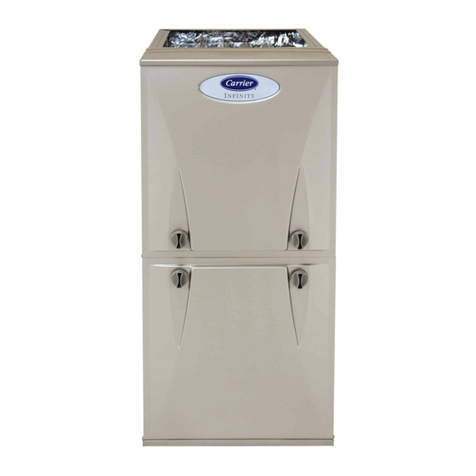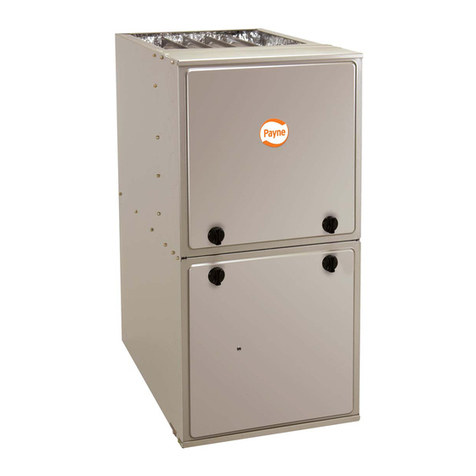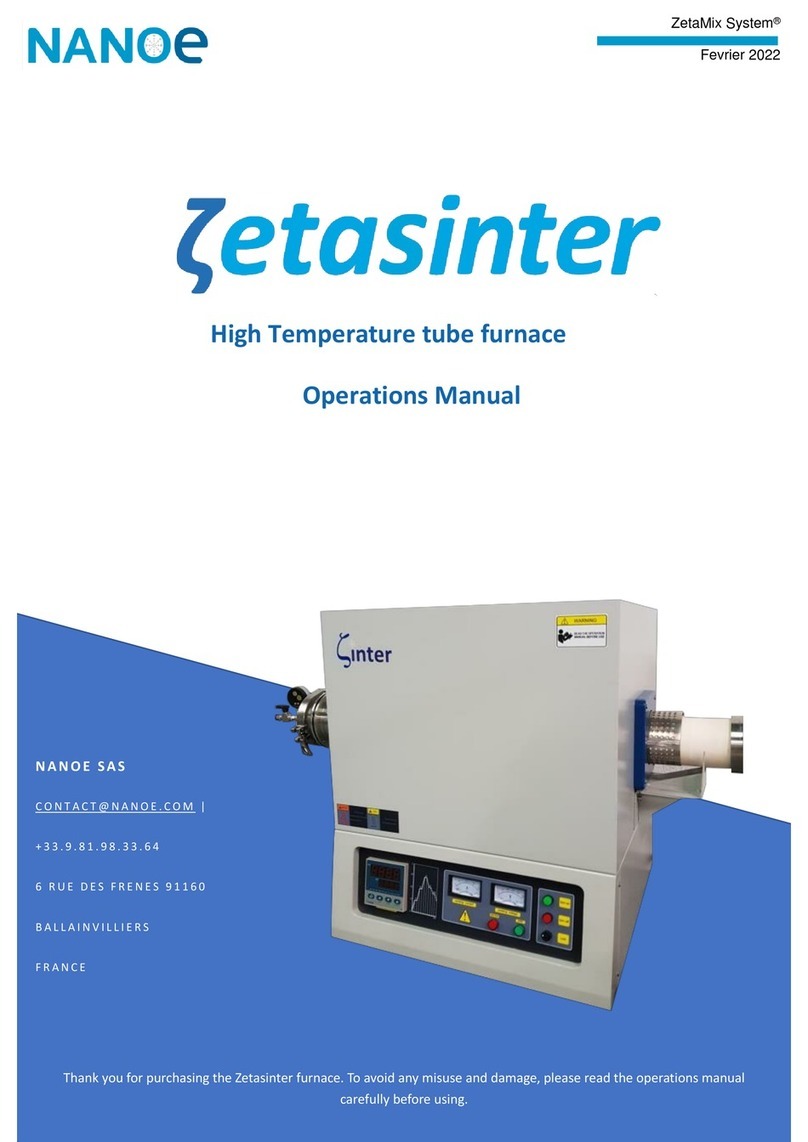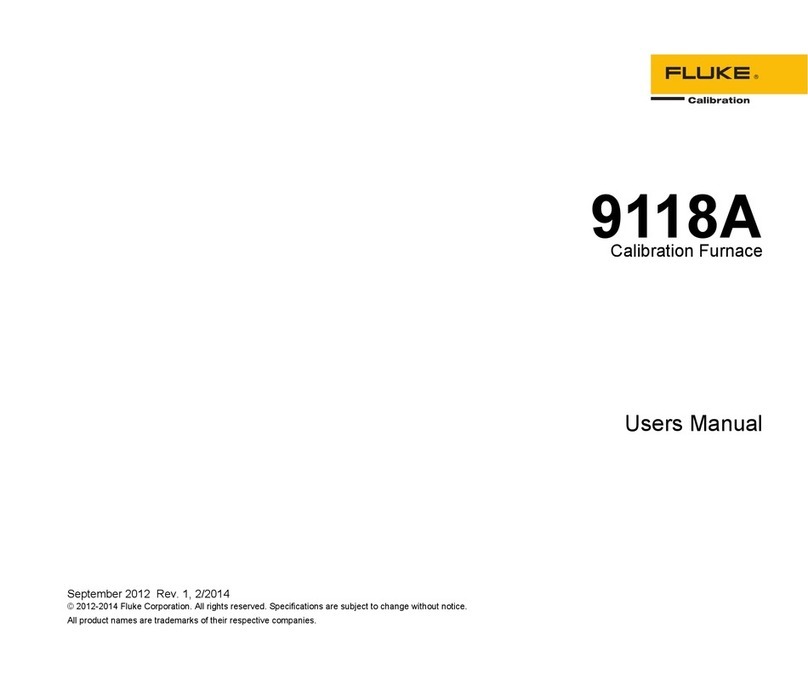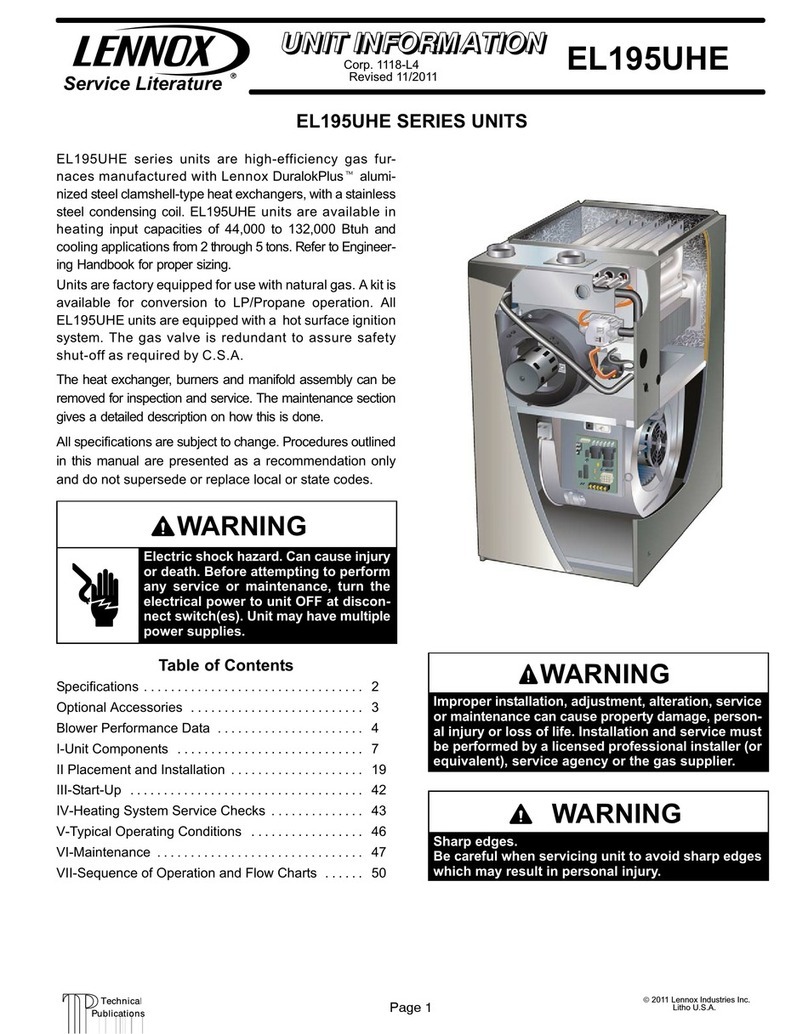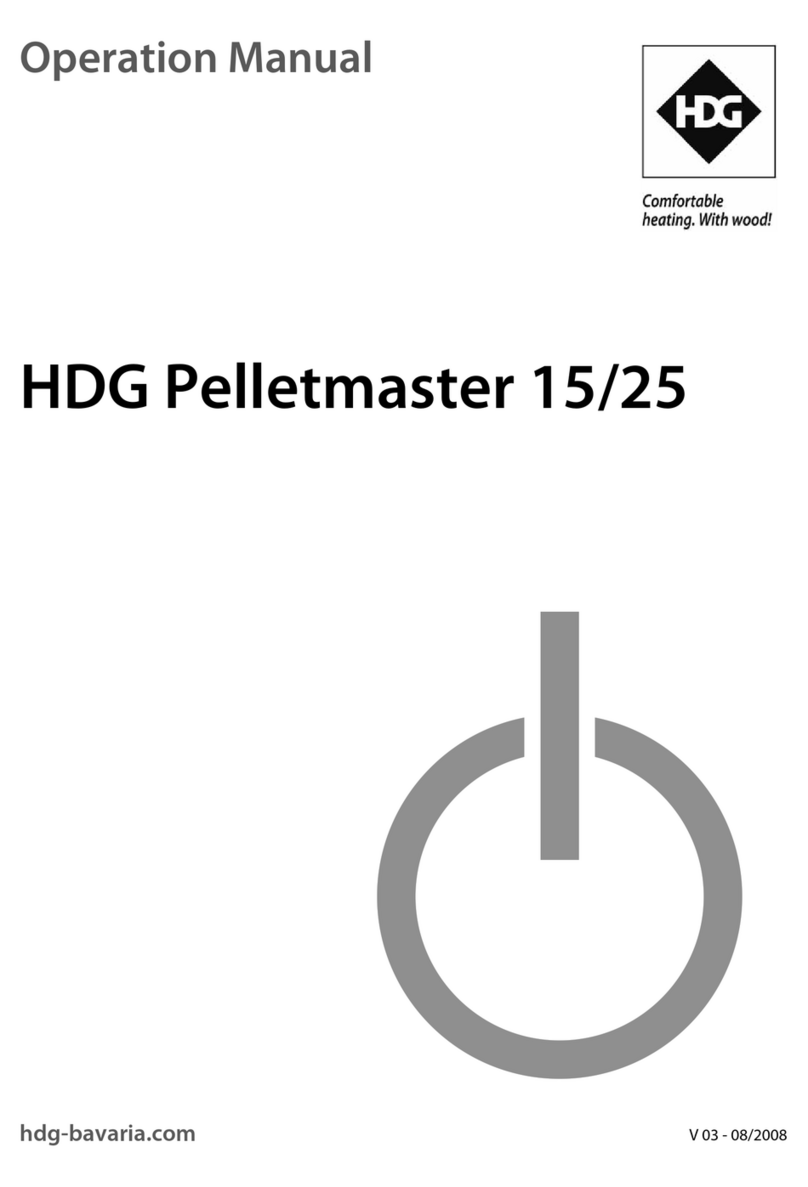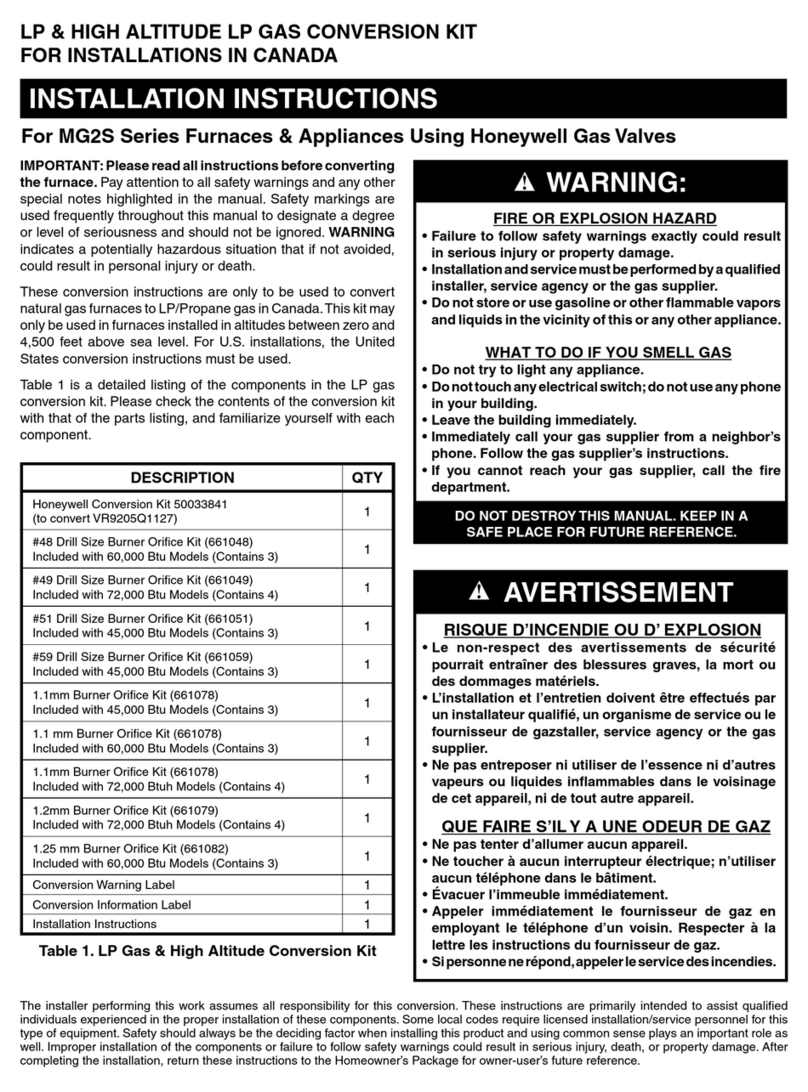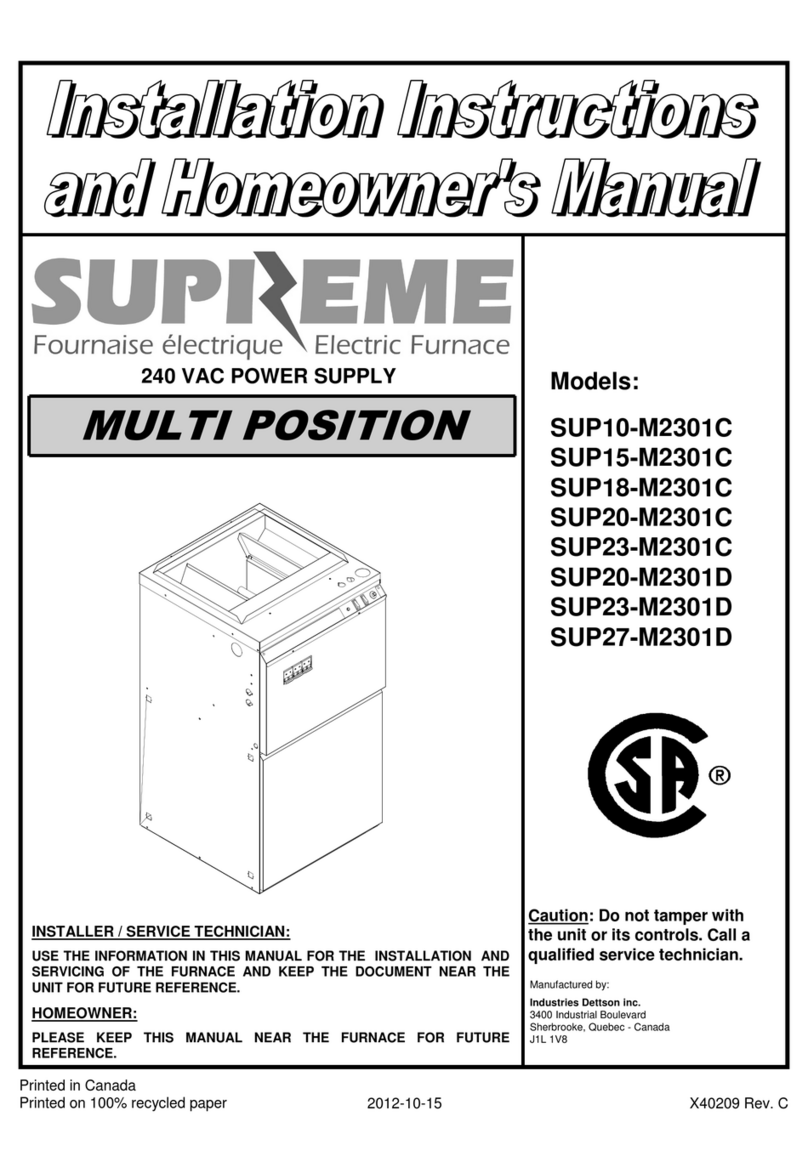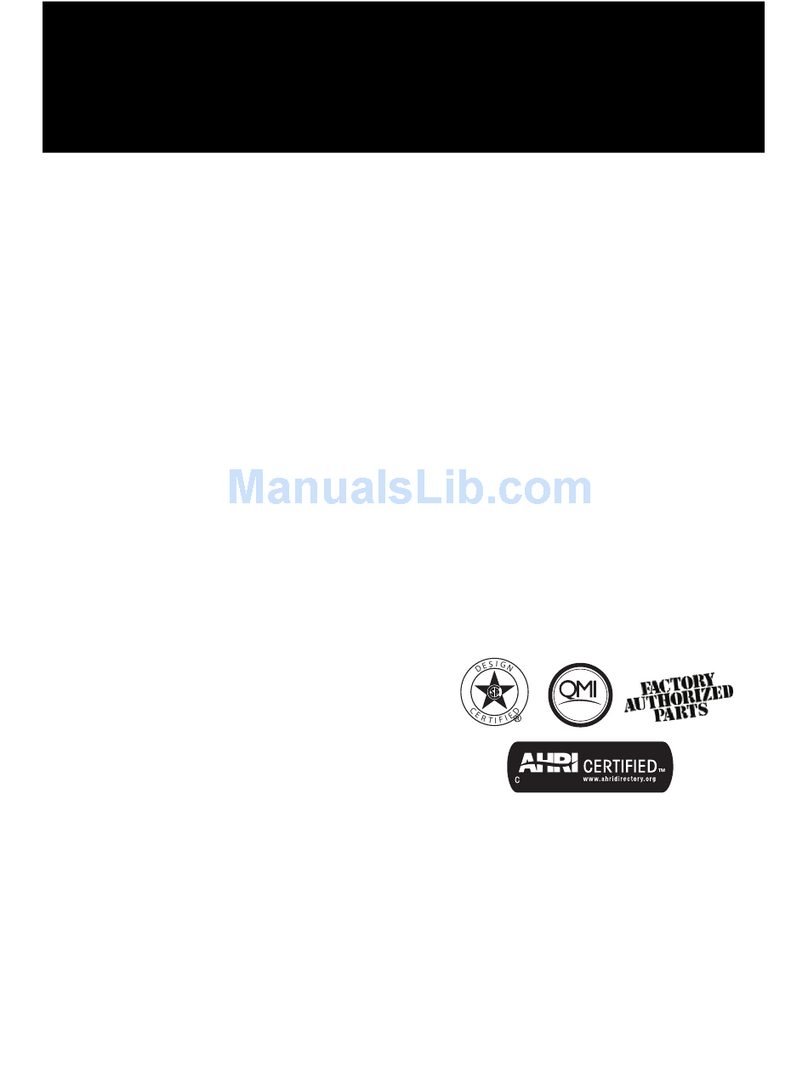
Specifications are subject to change without notice.
2441 01 4200 01
SAFETY CONSIDERATIONS
FIRE, EXPLOSION, ELECTRICAL SHOCK, AND
CARBON MONOXIDE POISONING HAZARD
Failure to follow this warning could result in dangerous
operation, serious injury, death, or property damage.
Improper installation, adjustment, alteration, service,
maintenance, or use could cause carbon monoxide
poisoning, explosion, fire, electrical shock, or other
conditions which may cause personal injury or property
damage. Consult a qualified service agency, local gas
supplier, or your distributor or branch for information or
assistance. The qualified service agency must use only
factory--authorized and listed kits or accessories when
modifying this product.
!WARNING
FURNACE RELIABILITY HAZARD
Improper installation or misapplication of furnace may
require excessive servicing or cause premature component
failure.
Application of this furnace should be indoors with special
attention given to vent sizing and material, gas input rate,
air temperature rise, unit leveling, and unit sizing.
CAUTION
!
Improper installation, adjustment, alteration, service,
maintenance, or use can cause explosion, fire, electrical shock, or
other conditions which may cause death, personal injury, or
property damage. Consult a qualified installer, service agency, or
your distributor or branch for information or assistance. The
qualified installer or agency must use factory--authorized kits or
accessories when modifying this product. Refer to the individual
instructions packaged with the kits or accessories when installing.
Follow all safety codes. Wear safety glasses, protective clothing,
and work gloves. Have a fire extinguisher available. Read these
instructions thoroughly and follow all warnings or cautions
include in literature and attached to the unit. Consult local
building codes, the current editions of the current edition of
National Fuel Gas Code (NFGC) NFPA 54/ANSI Z223.1 and the
current edition of National Electrical Code (NEC) NFPA 70.
Recognize safety information. This is the safety--alert symbol .
When you see this symbol on the unit and in instructions or
manuals, be alert to the potential for personal injury.
Understand the signal words DANGER,WARNING,and
CAUTION. These words are used with the safety--alert symbol.
DANGER identifies the most serious hazards which will result in
severe personal injury or death. WARNING signifies hazards
which could result in personal injury or death. CAUTION is
used to identify unsafe practices which may result in minor
personal injury or product and property damage. NOTE is used
to highlight suggestions which will result in enhanced
installation, reliability, or operation.
CUT HAZARD
Failure to follow this caution may result in personal injury.
Sheet metal parts may have sharp edges or burrs. Use care
and wear appropriate protective clothing, safety glasses and
gloves when handling parts and servicing furnaces.
CAUTION
!
1. Use only with type of gas approved for this furnace. Refer
to the furnace rating plate.
2. Install this furnace only in a location and position as
specified in the “Location” section of these instructions.
3. Provide adequate combustion and ventilation air to the
furnace space as specified in “Air for Combustion and
Ventilation” section.
4. Combustion products must be discharged outdoors.
Connect this furnace to an approved vent system only, as
specified in the “Venting” section of these instructions.
5. Never test for gas leaks with an open flame. Use a
commercially available soap solution made specifically for
the detection of leaks to check all connections, as specified
in the “Gas Piping” section.
6. Always install furnace to operate within the furnace’s
intended temperature--rise range with a duct system which
has an external static pressure within the allowable range,
as specified in the “Start--Up, Adjustments, and Safety
Check” section. See furnace rating plate.
7. When a furnace is installed so that supply ducts carry air
circulated by the furnace to areas outside the space
containing the furnace, the return air shall also be handled
by duct(s) sealed to the furnace casing and terminating
outside the space containing the furnace. See “Air Ducts”
section.
8. A gas--fired furnace for installation in a residential garage
must be installed as specified in the warning box in the
“Location” section (see Fig. 5).
9. The furnace is not permitted to be used for heating of
buildings under construction.
10. These Multipoise Gas--Fired Furnaces are CSA (formerly
A.G.A. and C.G.A). design--certified for use with natural
gas (see furnace rating plate) and for installation in
alcoves, attics, basements, closets, utility rooms,
crawlspaces, and garages. The furnace is factory--shipped
for use with natural gas and cannot be converted for use
with propane.
11. See Fig. 2 for required clearances to combustible
construction.
12. Maintain a 1--in. (25 mm) clearance from combustible
materials to supply air ductwork for a distance of 36
inches (914 mm) horizontally from the furnace. See
current edition of NFPA 90B or local code for further
requirements.
13. These furnaces SHALL NOT be installed directly on car-
peting, tile, or any other combustible material other than
wood flooring. In downflow installations, factory access-
ory floor base MUST be used when installed on combust-
ible materials and wood flooring. Special base is not re-
quired when this furnace is installed on manufacturer’s
approved coil assembly or a manufacturer’s coil casing
box is used. See Fig. 2 for clearance to combustible con-
struction.
INTRODUCTION
This 4--way multipoise Category I fan--assisted furnace is CSA
design--certified. A Category I fan--assisted furnace is an
appliance equipped with an integral mechanical means to either
draw or force products of combustion through the combustion
chamber and/or heat exchanger. The furnace is factory--shipped
for use with natural gas.
This furnace is not approved for installation in mobile homes,
recreational vehicles, or outdoors. The furnace is not permitted to
be used for heating of buildings under construction. This furnace
is designed for minimum continuous return--air temperature of
60_F(16_C)db or intermittent operation down to 55_F(13_C)
db such as when used with a night setback thermostat. Return--air
temperature must not exceed 80_F(27_C) db. Failure to follow
these return--air temperature limits may affect reliability of heat
exchangers, motors, and controls. (See Fig. 3).
For accessory installation details, refer to the applicable
instruction literature.
NOTE: Remove all shipping brackets and materials before
operating the furnace.
